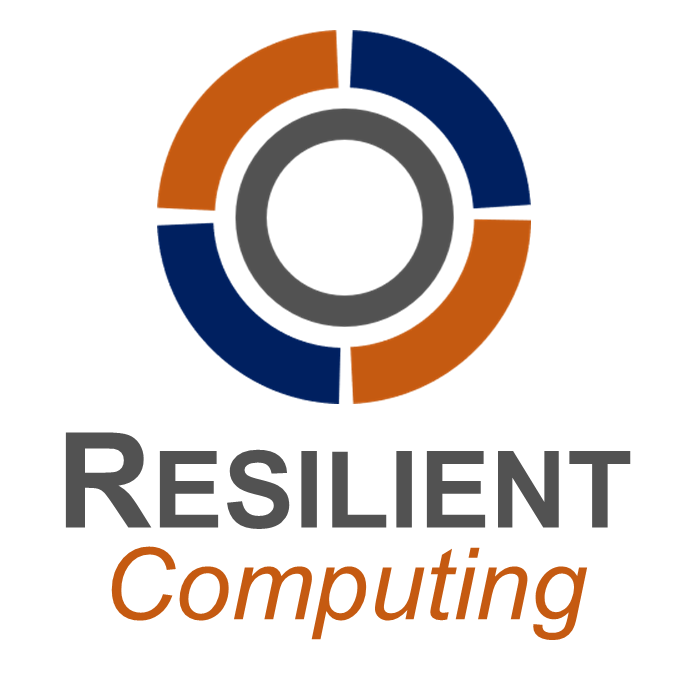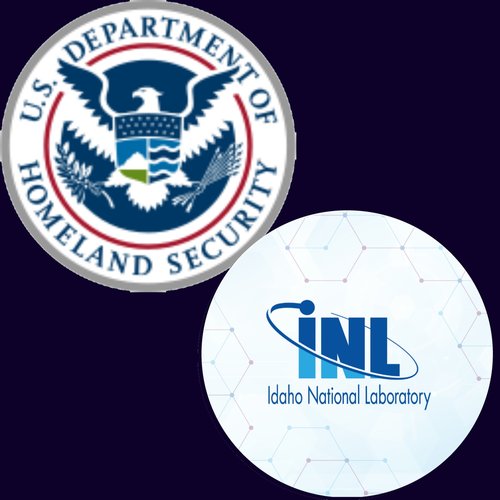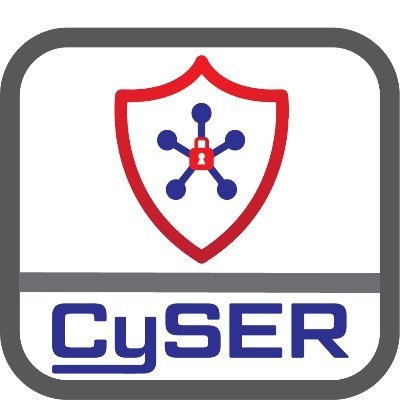Research
Sponsored Research

Department of Homeland Security
The HSQA project addresses three areas that align with DHS S&T long term strategies:
- Measure source code quality and maturity of ICS and cloud based software
- Composition, stylometry and origination of software
- Identify secured and sensitive sections of source code

Construction Engineer Research Lab (CERL)
We work with the TSEAL team at TechLink to test software components as well as provide support for measuring the quality assurance of these software components.

Resilient Computing
We collaborate with this MSU-spin out on the commercialization of edge computing technologies that are used in space and in our nation’s critical infrastructure.

Hoplite Industries
We collaborate with MSU's Software Engineering and Cybersecurity Laboratory by providing access to resources, training and providing internships to ROTC cadets through our CySER grant in collaboration with Griffiss Institute and Washington State University.

WolfSSL
We are working with MSU to help test the neXtECU controllers to increase cybersecurity protection.

Department of Homeland Security/Idaho National Labs
We have developed a framework that allows managers to make informed decisions and gives developers more visibility into code vulnerabilities.

Research Experiences for Undergraduates (REU)
The REU summer program provides an opportunity for students from around the country to come to MSU for an immersive summer learning experience.

Raytheon
Building on MSU’s prior research on building fault-tolerant computers for NASA, we design hardware diversity to make flight computers resilient to cyber-attacks.

Northwest Virtual Institute for Cybersecurity Education and Research (CySER)
As part of this inter-institution program, ROTC cadets at MSU participate in a baseline cybersecurity class their first semester and carry out a senior capstone project.

Blackthorne
Blackthorne Consulting is working with SECL to investigate new digital forensics techniques.

NASA
NASA is working with SECL to investigate intrusion-tolerant space computing technologies.
Student Projects
Grant Nelson
Title: Class Participation in Functions for Technical Debt Analysis of Procedural and Object Oriented Languages
Grant Nelson is researching programmatic Technical Debt analysis, focusing on analysis of procedural languages. During analysis of patterns and anti-patterns in object oriented languages, the membership of methods in classes is used as a metric. Procedural languages do not always specify a membership between functions and structures. Grant is looking into using the variable types of a function's arguments and the arguments' usage inside of the functions to determine a participation score. The participation score is a probability that a function may belong to a structure. If a participation score can be determined such that it can be used in place of the membership metric, then current pattern and anti-pattern analysis can be performed on procedural languages.
Zach Wadhams
Title: Hierarchical Software Quality Assurance (HSQA) for Complex Systems using SAST
tools
A complex system is, as the name suggests, intricate and challenging to analyze. Its
complexity arises from two key aspects: firstly, it comprises many individual components;
secondly, these components interact dynamically, producing emergent behaviors that
are often unpredictable and difficult to model. Analyzing components in isolation
falls short of capturing the system’s full behavior, requiring a more holistic approach.
Zach’s research leverages Static Application Security Testing (SAST) tools to examine
communication protocols enabling component interactions. SAST analyzes application
code to identify security vulnerabilities and quality issues. These protocol insights,
combined with component analysis, feed into PIQUE, SECL’s flagship HSQA technology,
to provide a comprehensive view of a complex system’s quality and security. Zach’s
work, in collaboration with the Pacific Northwest National Laboratory, applies this
approach to electric vehicle charging infrastructure, helping secure critical infrastructure.
Yvette Hastings
Title: Software Engineering for Enhanced Reactive Transport Modeling Software
Modeling software used to evaluate earth science processes are foundational tools used to assess and evaluate changes in the environment. Many earth science modeling software have not been designed by software engineers, which has resulted in software that is lacking in software quality and useability. Because of this, I will be merging the fields of earth science and software engineering to create reactive transport modeling software that meets high software quality standards. This will enhance the earth scientsist user experience and improve environmental monitoring and prediction.
Redempta Manzi
Title: Implementation of Data Science Approaches to Improve the Analysis of Cybersecurity Threats in Software Systems
Today’s growing dependence on technology has not only increased convenience and efficiency but has also created an expanded cybersecurity risk, particularly with software systems. Detecting and quantifying security threats such as vulnerabilities and weaknesses in software systems has been a challenging problem in research. To address this challenge, one approach is to benchmark a system against existing similar systems. Therefore, I am (1) analyzing software static analysis tools results to measure the security of different systems (Binary Files, SBOMs, and Docker Images); (2) investigating theoretical and empirical approaches for integrating static-analysis tool outputs; (3) improving the validity of HSQA models (utility function) to predict the security score of a system under analysis.
Ernesto Ortiz
Title: Automating Security Control Compliance with OSCAL
Federal law requires that the network and information systems of entities that manage the federal government's data comply with some baseline security controls.The process for proving that an entity has complied with the required controls involves the production and evaluation of massive documents known as System Security Plans. The National Institute of Standards and Technology has created OSCAL, Open Security Controls Assessment Language. OSCAL aims to automate the transmission and evaluation of security compliance documents. It does this by standardizing allowed formats, syntax, keys, and values within documents, and by enabling cross references across documents. My research aims to develop the functionality that will allow users to express through OSCAL security compliance information for systems deployed in the cloud.
Emma Sheppard
Title: Hierarchical Software Quality Assurance for Electric Vehicle Charging Station Software
Emma Sheppard is PhD student with a research focus on cybersecurity of complex and specialized systems. Current work includes software quality assurance to secure electric vehicle charging stations. Electric vehicle charging infrastructure presents a suite of novel cyber-physical threats. Among this infrastructure, charging stations are the most vulnerable elements. The software in the charging station supply equipment is particularly vulnerable. Currently, the software is an attack surface that is largely unprotected and poorly characterized. To represent the vulnerabilities in this attack surface, her research is applying modern software quality assurance to characterize vulnerabilities in electric vehicle charging station software. Specifically, the application of hierarchical software quality assurance (HSQA) to specialized electric vehicle charging station software. HSQA provides a comprehensive view of the code quality and security — from the level of individual vulnerabilities (e.g., CVEs) to high level characteristics (e.g., CIA Triad). HSQA incorporates quality and security considerations throughout the software development lifecycle. Thus, her research operationalizes HSQA for assessing and securing electrical vehicle charging station software.
Madie Munro
Title: Computationally Enhanced Risk Communication for Insider Threats
Insider threats have become the costliest type of organizational cyber-attacks, both human and financial. Two main types of insiders are malicious, where someone attacks organizational data from the inside intentionally, and inadvertent, where someone compromises organizational data due to negligence or poor cybersecure behavior. Risk communication would best inform, warn, and guide individuals towards cyber risk mitigation behavior and changes in insider risk perceptions. Effective risk communication bridges risk perception gaps between hazard domain experts and affected individuals. Additionally, timely deployment of risk messages is imperative when warning affected groups of specific hazards, particularly insider threats. To ensure messages are developed efficiently and effectively, I plan to investigate, implement, and assess computational methods which enhance risk communication on insider threats. Specifically, I plan to operationalize theoretical frameworks for risk communication using advanced computational tools to inform the construction, validation, and testing of risk messages. Frameworks analyzed include the Narrative Policy Framework or Protection Motivation Theory; computational tools leveraged include Natural Language Processing and Large Language Models. The end goal is to assess whether such computational tools improve efficiency and efficacy of risk message development, and if targeting narrative transportation or fear-appeal motivates individuals towards protective action against insider threats. This research supplemental to on-going development of the Domain Agnostic Risk Communication Framework developed by Dr. Ann Marie Reinhold at Montana State University. Furthermore, I am collaborating with researchers at the Virginia Modeling, Analysis and Simulation Center (VMASC) located at Old Dominion University to investigate personalized risk communication efficacy.
Graduated Students:
-
Rahman, K. "Automating Metamorphic Testing by Predicting Metamorphic Relations for Complex and Vulnerability-Prone Applications"
-
Shu Fuhnwi, G. "Using Improved Machine Learning and Statistical Assessments to Mitigate Bias in Anomaly Detection Systemss"
-
Johnson, C. "Verification Tool for Securing RISC-V FPGA-Based Process Control System"
-
Boles, B. "Static Analysis Tool Discrepancies and the Pursuit of a Unified Vulnerability Database"
-
Wadhams, Z. "On improving the adoption, usability, and retention of static application security testing (SAST) tools," February 2025
-
O'Donoghue, E. "Using software bill of materials for software supply chain security and its generation impact on vulnerability detection," November 2024
-
Saha, P. "Improving The Effectiveness Of Metamorphic Testing Using Systematic Test Case Generation," March 2024
-
Pearsall, R. "An Evaluation of Graph Representation of Programs for Malware Detection and Categorization Using Graph-Based Machine Learning Methods," August 2023
-
McCartney, S. "A Framework to Assess Bug-Bounty Platforms based on Potential Attack Vectors," December 2022
-
Rehman F. "Improving the Confidence of Machine Learning Models Through Improved Software Testing Approaches," December 2022
-
Harrison P. "Analyzing The Security Of C# Source Code Using A Hierarchical Quality Model," May 2022
-
Griffith I. "Design Pattern Decay -A Study of Design Pattern Grime and its Impact on Quality and Technical Debt," December 2021
-
Johnson A. "The Analysis of Binary File Security Using A Hierarchical Quality Model," December 2021
-
Rice D. "An Extensible Hierarchical Architecture for Analysis of Software Quality Assurance," December 2020
-
King H.K. "Informing the Construction of Narrative-Based Risk Communication," November 2019
-
Reimanis D.K. "The Identification, Characterization, and Evaluation of Model-Based Behavioral Decay in Design Patterns." August 2019
-
Smith K. "Exploratory Study on the Effectiveness of Type Level Complexity Metrics," April 2018
-
Luhr R. "The Application of Technical Debt Mitigation Techniques to a Multidisciplinary software Project," April 2015
-
Griffith I. "Technical Debt Management in Release Planning - A Decision Support Framework," August 2014
- Dale M. "Impacts of Modular Grime on Technical Debt," April 2014
- Schanz T. "A Taxonomy of Modular Grime in Design Patterns," April 2011
